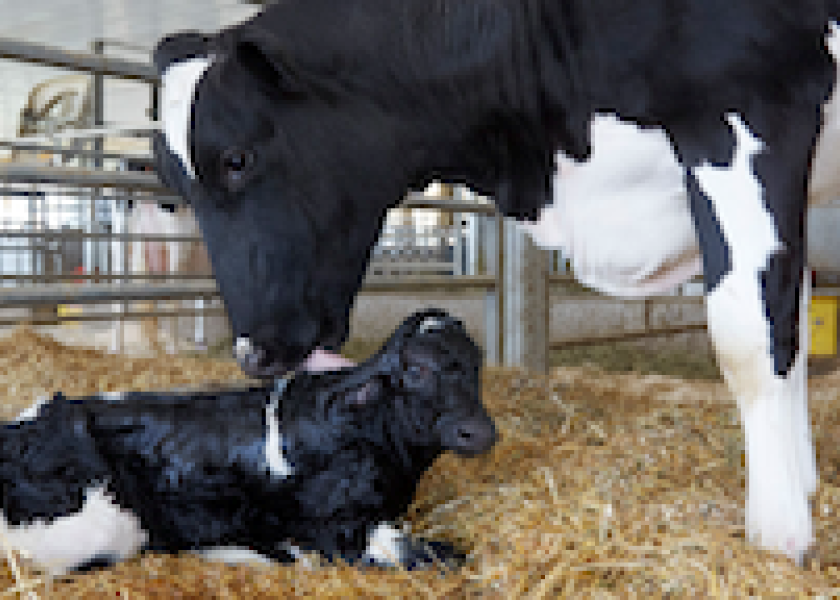A Pound Of Prevention For Hypocalcemia

Hypocalcemia is a well-known issue in the dairy industry, but that’s not the case for why cows become hypocalcemic. Jesse Goff’s work, along with other peers’ research, points to metabolic alkalosis.
“The cows are alkalotic as a result of the potassium in the forages they are fed,” says Goff, Iowa State University professor and dairy veterinarian.
“Alkalosis blocks the action of a calcium regulating hormone, called parathyroid hormone, on the bone and kidney of the cow. This impairs the cow’s ability to adapt to blood calcium lost to colostrum and milk at the onset of lactation,” he adds.
Prevention is a key component to addressing the issue, Goff says. Still, his perspective is because every dairy is different, addressing hypocalcemia through prevention is not a one-size-fits-all venture. He offers four recommendations for dairy veterinarians’ and producers’ consideration:
1. Reduce close-up (prefresh) diet potassium (K).
“Focus on procuring or growing low-potassium grasses for dry cow diets by avoiding manure application to fields used to grow dry cow forage,” he recommends. Also, harvest grasses when more mature than perhaps you have in the past, as mature forages contain less potassium. “Use warm season grasses when possible for a portion of the dry cow diet; corn silage is a warm season grass,” he adds.
2. Consider adding anions to the diet to acidify the cow to restore tissue sensitivity to the calcium-regulating parathyroid hormone.
Goff says many nutritionists utilize ration balancing programs that will calculate the diet cation-anion difference (DCAD). “The diet should be formulated to be between -75 and -125 mEq/kg diet, depending on the anion source used,” he says. Urine pH can be tested to ensure the proper anion content. Goff says when urine pH of the herd averages between 6.0 and 6.6 the week before calving, the diet is correct. Below 5.5 pH you have excessive acidification. “The cows will reduce their dry matter intake to avoid over-acidification,” he adds. “Above a 7.25 pH there will be little improvement in blood calcium.”
3. Another strategy Goff recommends is to bind the diet calcium for at least 10 days before calving.
“When successful, the cow's body is tricked into thinking it is calcium deficient and it begins to produce hormones to increase diet calcium absorption and bone calcium resorption mechanisms prior to calving,” he explains. “The result is when these systems are up-regulated the cow can readily adapt to the onset of lactation.”
With both diet strategies, it is important to provide a readily available source of magnesium to the cow. The reason is cows that are hypomagnesemic will struggle with calcium homeostasis as well, Goff explains. He says diet magnesium should be about 0.4%. “We also think diet phosphorus should be kept below 0.3% for optimum calcium homeostasis at calving,” he adds.
4. Another option is to provide a readily available (soluble) calcium source to the cow immediately after calving.
Oral calcium boluses on the market generally contain calcium chloride or propionate which is rapidly soluble. Drenches or gels containing calcium can be very effective but require more skilled labor to administer to the cow. Goff says administering calcium can be repeated 12 to 24 hours after calving. Providing intravenous calcium for high-risk cows at calving is no longer warranted, he says. “It seems to impair the calcium homeostasis adaptation mechanisms, so the cow is actually more hypocalcemic on day two of lactation,” he explains “Subcutaneous calcium may be helpful, but it generally requires injection into five or more sites to avoid sterile – and maybe not so sterile – abscess formation.”







